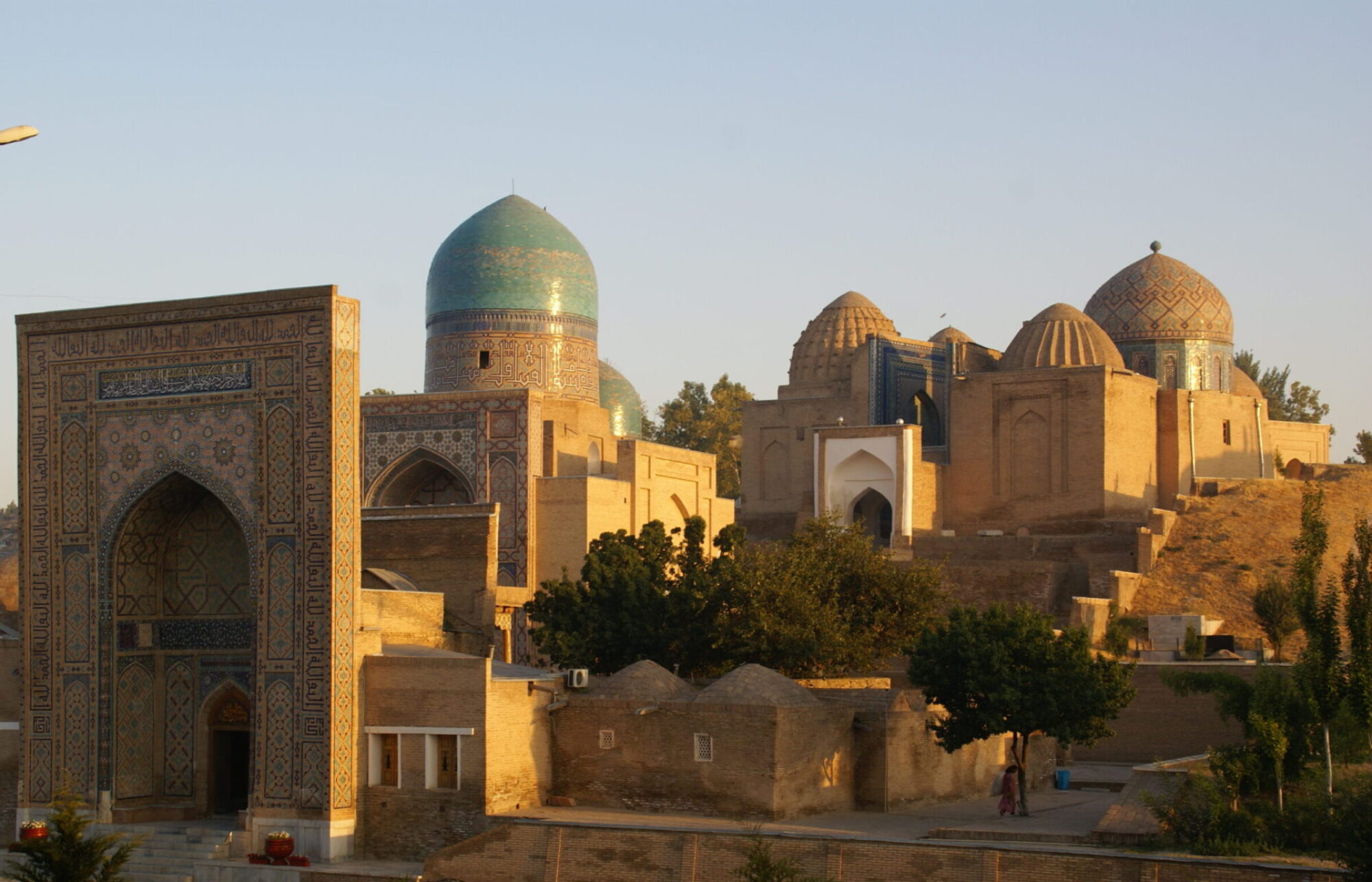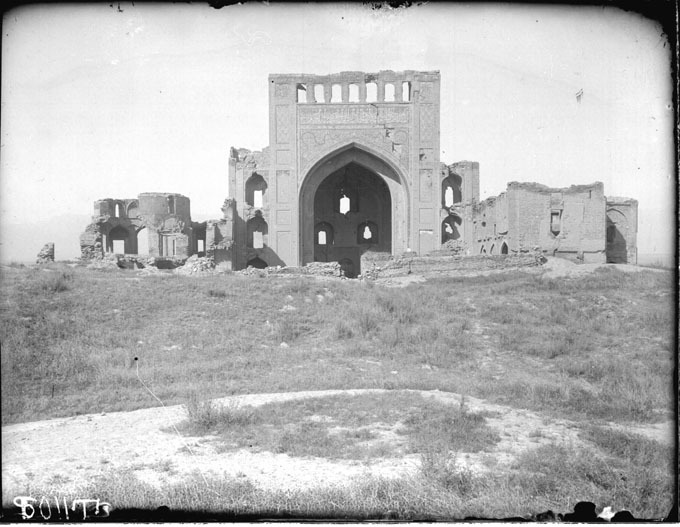The shrine of Shaykh Jamal al-Din (1455-1456) is situated 14 km southwest of Ashkhabad, the capital of present-day Turkmenistan. The Timurid town was erected during the reign of Abu’l-Qasim Babur Bahadur Khan (1447-1457) on the remains of a settlement destroyed by the Mongols in the 13th century. The complex consisted of a mosque and two domed structures, most likely a khanaqah (Sufi lodge) and a madrasa (Islamic religious school) arranged around a courtyard. The presumed tomb of the shaykh was situated in the courtyard in front of the mosque. The tile decoration of the mosque was most remarkable as it depicted a pair of dragons in the spandrels of the entrance iwan (monumental gate). The large square panels of mosaic faience were fasten by lead pins to a thick layer of gypsum mortar. The portal was crowned by a three-level arcade consisting of seven arches. It was flanked by guldasta (corner towers) typical of monumental Timurid structures.
The mosque was erected on a hill comprising the remains of the old city wall of Anau. The main sanctuary with the prominent iwan was joined at right angles to two large multi-storied buildings on each side. Both of these had rooms arranged in two levels around a central dome chamber. The continuous galleries on the second floor were open to the central space and served as zones of transition. It is likely that these ambulatories could accommodate large groups for dhikr Sufi ceremonies (uttering repetitive prayers). The many windows of the mosque were decorated with plaster grills and encrusted with coloured glass.
Unfortunately, the ensemble was fully destroyed by a devastating earthquake in 1948 and further damaged by another tremor in 1966. Galina A. Pugachenkova managed to record the site in 1947 and her study published in 1959 constitutes the most comprehensive report we have to date.


